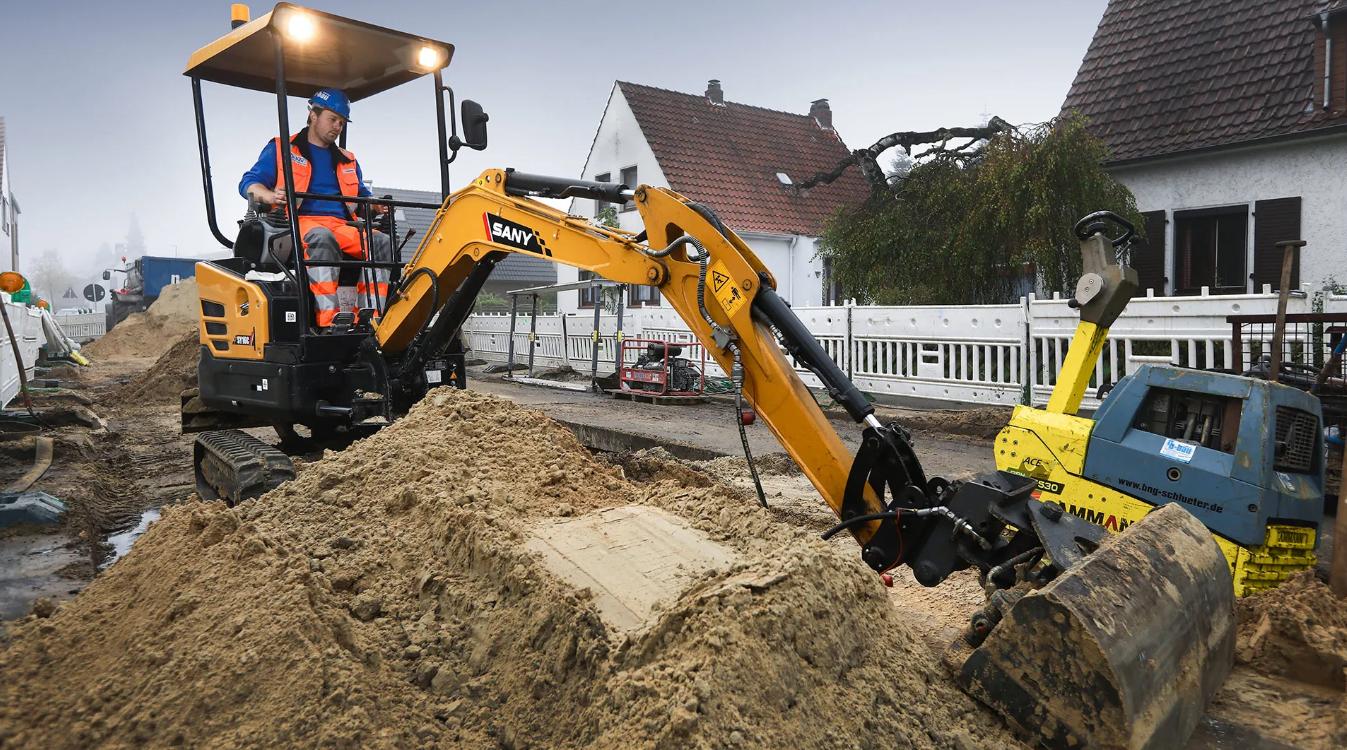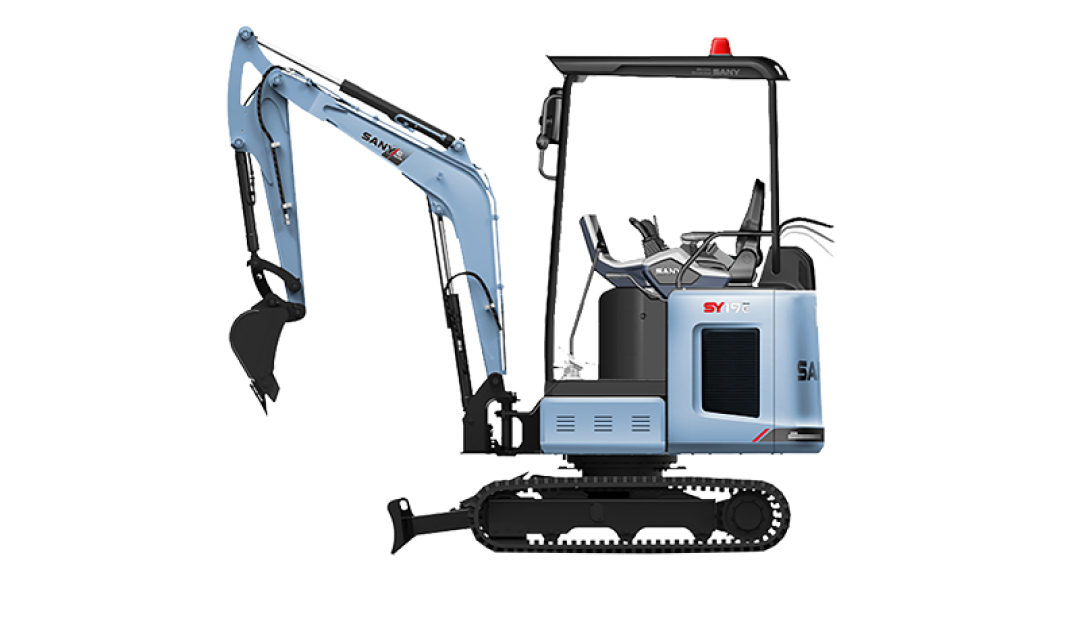How to Pick the Best Mini Excavator: Key Features to Look for
This guide outlines mini excavators' definition, advantages, and tips for selecting the best mini excavator, acting as a reference for grasping this practical machinery.
In modern fields such as engineering construction, agricultural production, and municipal maintenance, mini excavators, with their unique advantages of being compact, flexible, efficient, and cost-effective, have become indispensable practical tools. Whether dealing with operational constraints in narrow spaces or meeting the need for meticulous project cost control, they can cope with ease thanks to their strong adaptability.
This guide will systematically analyze the performance characteristics, applicable scenarios, and selection logic of mini excavators to help you identify the best mini excavator and choose the most suitable model. Whether you are a frontline operator in the industry, a person in charge of equipment procurement, or a newcomer to this field, you can gain practical insights from it, quickly grasp the core knowledge of mini excavators, and make equipment selection and use more precise and efficient.

What Is a Mini Excavator and Why Choose One?
A mini excavator is a type of construction machinery that is small in size and flexible in operation. It usually refers to excavating equipment with an overall weight of about 1-6 tons, though the classification standards vary slightly among different manufacturers and regions. It is mainly used in scenarios such as small earthworks, municipal construction, agricultural operations, and garden maintenance. It generally consists of a power system, working device, slewing mechanism, traveling mechanism, etc. It can also be equipped with various attachments such as buckets, breakers, and grapples to realize multiple functions, including excavation, crushing, and handling.
Advantages of Mini Excavators
●Strong Flexibility
It is small in size with a small minimum turning radius, enabling work in narrow spaces. Its adaptability to the site is far higher than that of large excavators.
●Easy Operation
The control system is relatively simple, so beginners can learn quickly. Moreover, most models are equipped with hydraulic pilot operation, which has high operation accuracy and can complete fine operations.
●Convenient Transportation
With light weight, it does not require a large trailer. It can be towed and transported by an ordinary pickup or light truck, saving transportation costs and time. It is especially suitable for transferring between multiple construction sites in short distances.
●Low Fuel Consumption and Controllable Cost
The engine power is relatively small, so the daily fuel consumption is much lower than that of large excavators. In addition, maintenance is simple, and the periodic costs such as replacing filters and engine oil are low. Suitable for small and medium-sized engineering teams or individual users to reduce operating costs.
●Versatility
Attachments such as breakers, log grapples, rotary drills, and bulldozer blades can be quickly switched, enabling excavation, crushing, loading/unloading, and drilling operations. One equipment can meet the needs of multiple scenarios and improve equipment utilization. For example, in rural construction, it can not only dig foundations but also use a breaker to crush the walls of old houses.
●Little Damage to the Site
A crawler or tire has a large ground contact area and low ground pressure. When working on soft ground, it is not easy to get stuck and causes little rolling damage to the ground, suitable for scenarios such as agriculture or gardening that have high requirements for ground protection.
Why Choose a Mini Excavator?
●Matching Applicable Scenarios
For small and medium-sized projects, such as municipal pipeline maintenance and garden renovation, large-scale equipment is not needed. The operating capacity of mini excavators is fully sufficient to meet the needs, which can avoid resource waste.
●Priority to Cost-effectiveness
For individual operators or small and medium-sized engineering teams with limited budgets, mini excavators have low purchase and operating costs, and short investment return cycles.
●Broad Market Demand
With the advancement of urbanization, rural infrastructure construction and the increase of small-scale projects, the demand for flexible and efficient small-scale equipment has surged, leading to more opportunities for equipment leasing or undertaking projects.
What Features Should the Best Mini Excavator Have?
The best mini excavator balances performance, safety, and adaptability. Here are its core features and industry standard requirements:
1. Power and Hydraulic System
●Efficient Power Configuration
Mainstream models are equipped with diesel engines or pure electric drives. For example, the SANY SY16C Mini Excavator comes with an exclusive Yanmar high-power engine, delivering stronger digging and traveling performance.
●Optimized Hydraulic System
By adopting a combination of load-sensing pumps and multi-way valves, the hydraulic system improves control precision by 35%, enabling smooth composite operations. Take the SANY SY16C as an example: its load-sensing hydraulic system enables precise matching between the engine and main pump, ensuring stable motion coordination.
2. Safety and Reliability
●Structural Safety Certification
It must be equipped with ROPS (Roll-Over Protective Structure) and FOPS (Falling Object Protective Structure), complying with ISO 12117 and ISO 3449 standards.
For instance, the SANY SY16C has passed over 2,000 hours of on-site digging tests and more than 800,000 fatigue tests on key components, with its excellent performance recognized worldwide.
●Intelligent Safety Protection
It includes hydraulic locks, anti-misoperation control modes, transport locks, and swing limiters. Some models are fitted with 360° cameras and proximity sensors to enhance operational safety in narrow spaces.
●Durability Design
Booms and arms are made of high-strength steel plates, with a service life exceeding 8,000 hours; buckets use high-wear-resistant mat
3. Flexibility and Versatility
●Compact Body and Telescopic Chassis
Overall width can be adjusted between 980-1350mm, adapting to narrow passages under 1m. The minimum tail swing radius is only 920mm, suitable for corner operations. For example, the SANY SY16C features zero tail swing, telescopic landing gear, and a swing arm, simplifying operations in corners and other tight spaces.
●Quick Attachment Switching
It supports over ten types of attachments (such as breakers, grapples, and hydraulic shears), with mechanical/hydraulic dual-locking devices ensuring safety.
4. Intelligence and Comfort
●Digital Management
It is equipped with IoT systems (e.g., SANY’s intelligent service platform "Yiweixun"), supporting remote monitoring of fuel consumption, workload, and fault warnings via mobile apps, improving maintenance efficiency by 50%.
●Humanized Design
Suspension seats, automatic air conditioning, and large LED displays reduce operator fatigue. The cab glass area is expanded by 30%, combined with wide-angle rearview mirrors, achieving 360° visibility.
5. Industry Standards and Compliance
●International Certification
It must pass CE certification (compliant with EN 474-5:2022), including static/dynamic load tests, hydraulic system pressure tests, and noise control (≤92dB(A)).
●Environmental Requirements
Engines must meet China IV/Euro V emission standards; electric models achieve zero emissions, suitable for indoor or ecologically sensitive areas.
6. Buying Advice
Prioritize products certified to GB/T 25695-2025 standards. Focus on the stability of the hydraulic system and the responsiveness of after-sales service. For long-term use, it is advisable to calculate the total lifecycle cost, including fuel, maintenance, and residual value.
How to Choose the Right Mini Excavator for Your Needs
1. Clarify the Working Environment and Requirements
●Working site: If working in confined spaces such as narrow interiors, roadways, orchards, or gardens, you should choose a model with a small size and a small turning radius, such as a 1-3 ton micro excavator. If working on an open construction site or farmland, you can choose a slightly larger model according to the workload and operation range, such as a 4-6 ton mini excavator.
●Soil conditions: If the soil at the working site is relatively soft, such as farmland or beaches, you need to choose a crawler excavator with low ground pressure to avoid getting stuck. If working on hard soil or rocky ground, the excavator needs to have strong digging force and wear resistance, and you can consider equipping it with attachments such as a breaker.
●Type of operation: For ordinary earth excavation and loading operations, a standard-configured bucket is sufficient. If operations involve special tasks such as crushing, grabbing, or drilling (e.g., crushing concrete, grabbing wood, drilling, piling, etc.), choose an excavator that can be adapted to the corresponding attachments, and ensure the hydraulic system of the excavator can provide sufficient pressure and flow.
2. Consider Performance Parameters
●Digging depth and radius: Determine the maximum digging depth and maximum digging radius required for the excavator according to the actual operation needs to ensure that it can cover the working area. For example, when digging ditches, select a model based on the depth and width of the ditch.
●Bucket capacity: The bucket capacity determines the amount of earth dug each time. When the workload is large, an excavator with a larger bucket capacity should be chosen to improve work efficiency; however, if the working space is narrow or high precision is required, a smaller bucket capacity may be more appropriate.
●Engine power: Engine power affects the excavator’s performance and work efficiency. For high-intensity operations or complex terrain, a model with a larger engine power is needed; but if the operation intensity is low, a smaller engine can also meet the needs and is more fuel-efficient.
3. Consider Cost Factors
●Purchase cost: The prices of mini excavators of different brands, models and configurations vary greatly, so you should choose a suitable model according to your budget. Generally speaking, domestic excavators are relatively low in price, while internationally renowned brands are more expensive, but offer better quality and performance guarantees.
●Operating cost: Including fuel consumption, maintenance costs, parts prices, etc. Excavators with low fuel consumption can reduce daily operating costs; models with simple maintenance and cheap parts will also have lower later maintenance costs.
4. Evaluate Brand and After-Sales Service
When choosing mini excavators, brand strength and after-sales support are key pillars for long-term use, with two key aspects to focus on:
●Brand reputation: Choose brands with a good market reputation and high popularity. Excavators from these brands usually more guarantee quality, performance and reliability, and have a high market share, so maintenance parts are easier to obtain.
●After-sales service: Good after-sales service can timely solve problems that occur during the use of the equipment and reduce downtime. It is necessary to understand whether the after-sales service network of the manufacturer or dealer is complete, whether the response speed of the after-sales service is fast, and what the warranty policy includes.
Take SANY Group as an example. Founded in 1989, it is a leading Chinese construction machinery brand whose business covers multiple fields, including construction and mining equipment, port machinery, oil drilling equipment, and renewable energy systems. It is the first construction machinery enterprise in China to achieve annual revenue exceeding RMB 100 billion and firmly holds a position among the world's top three construction machinery manufacturers.
SANY mini excavators meet the above evaluation criteria through three core advantages:
Outstanding overall performance: Renowned for high cost-effectiveness and stable, reliable operational performance, they are suitable for multiple scenarios such as gardening, municipal engineering, and small-scale infrastructure projects.
Intelligence and comfort: Equipped with advanced cabs (e.g., suspension seats, large displays) and precision control systems, they reduce operational fatigue and improve operational accuracy.
Comprehensive service support: Backed by an extensive global service network, they offer fast after-sales responses, sufficient parts supply, and clear warranty policies, providing users with full-lifecycle support.

Conclusion
Whether it is promoting small-scale projects in the process of urbanization, assisting in rural infrastructure construction, or meeting the needs of fine operations such as garden maintenance, mini excavators are injecting vitality into the development of various industries with their unique value. By organizing this information, it is believed that everyone can more clearly grasp the application logic and selection methods of the best mini excavator, allowing this practical machinery can better serve actual production and construction, and create greater value in a limited space.
FAQs
What Is the Most Popular Size of Mini Excavator for Contractors?
Mini excavators generally have an overall weight of about 1-6 tons. Take SANY 's best compact excavator SY26U as an example, it has a total weight of 2.76 tons but an engine power of 15.2kW. With its strong power performance, it can maintain stable and reliable operation in various harsh working conditions, balancing flexibility and durability.
Is Zero-Tail Swing Important for Tight Job Sites?
For narrow job sites, zero-tail swing is an essential feature of mini excavators. By eliminating the risk of tail collision, reducing the space required for rotation, and enhancing operational flexibility, it can significantly reduce construction difficulty, improve safety and work efficiency.
What Is the Best Mini Excavator for the Money?
There is no absolute answer to the most cost-effective mini excavator, as it needs to comprehensively consider factors such as price, performance, and maintenance costs. SANY has some cost-effective mini excavators to choose from, such as the SY26U, which is popular among contractors, and the electric mini excavator SY19E, which has recently attracted the attention of many contractors.



